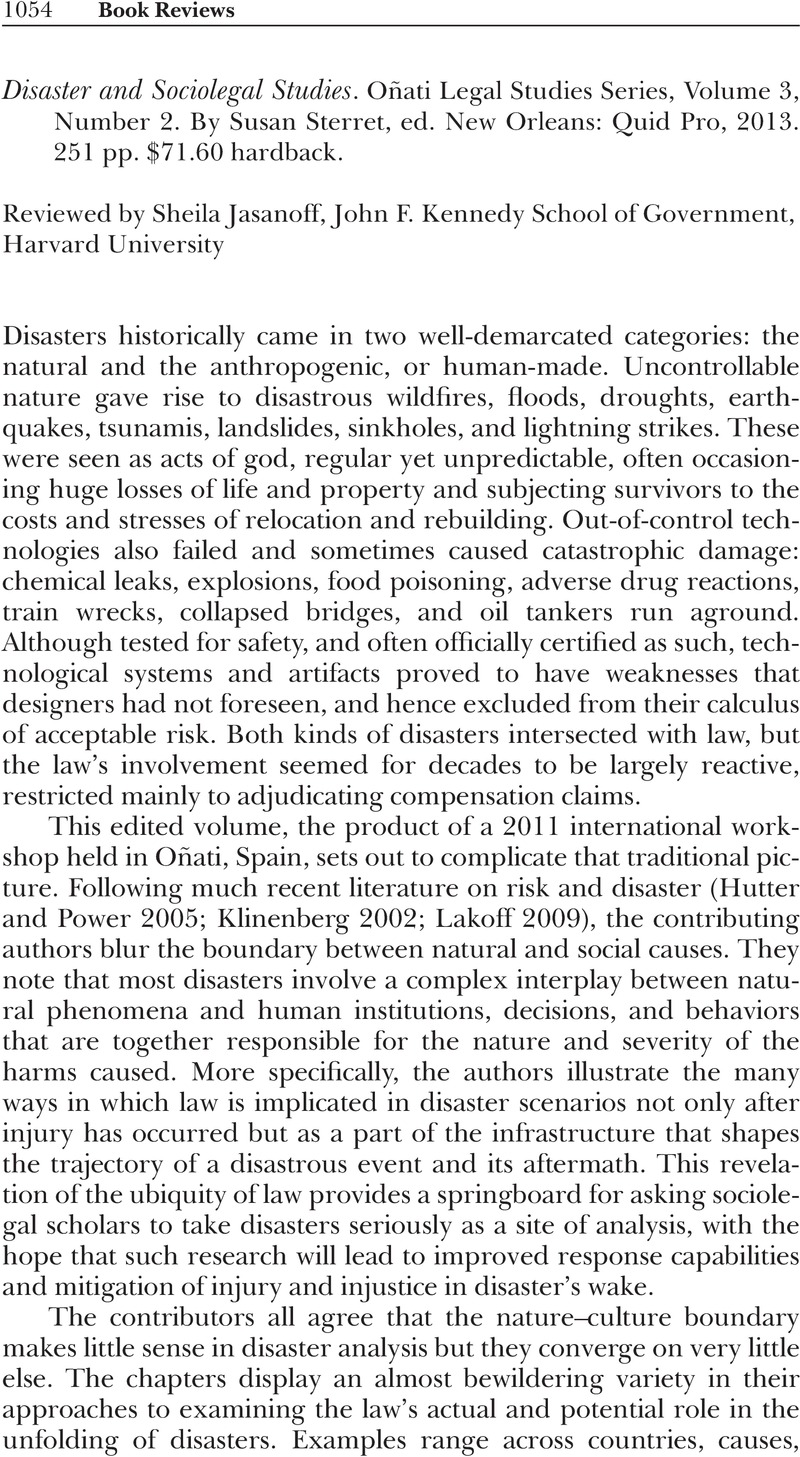No CrossRef data available.
Article contents
Disaster and Sociolegal Studies. Oñati Legal Studies Series, Volume 3, Number 2. By Susan Sterret, ed. New Orleans: Quid Pro, 2013. 251 pp. $71.60 hardback.
Review products
Disaster and Sociolegal Studies. Oñati Legal Studies Series, Volume 3, Number 2. By Susan Sterret, ed. New Orleans: Quid Pro, 2013. 251 pp. $71.60 hardback.
Published online by Cambridge University Press: 01 January 2024
Abstract
An abstract is not available for this content so a preview has been provided. Please use the Get access link above for information on how to access this content.

- Type
- Book Reviews
- Information
- Copyright
- © 2016 Law and Society Association.
References
Barkan, Ross (2016) Meet Ken Feinberg, the Master of Disasters. Observer. Available at: http://observer.com/2016/03/meet-ken-feinberg-the-master-of-disasters/ (accessed July 2016).Google Scholar
Feinberg, Kenneth (2005) What is Life Worth? The Unprecedented Effort to Compensate the Victims of 9/11. Cambridge, MA: Public Affairs.Google Scholar
Bridget, Hutter, & Power, Michael, eds. (2005) Organizational Encounters with Risk. Cambridge: Cambridge University Press.Google Scholar
Jasanoff, Sheila (1995) Science at the Bar: Law, Science, and Technology in America. Cambridge, MA: Harvard University Press.CrossRefGoogle Scholar
Jasanoff, Sheila (2012) Science and Public Reason. Abingdon: Routledge-Earthscan.CrossRefGoogle Scholar
Klinenberg, Eric (2002) Heat Wave: A Social Autopsy of Disaster in Chicago. Chicago: Univ. of Chicago Press.CrossRefGoogle Scholar
Lakoff, Andrew, ed. (2009) Disaster and the Politics of Intervention. New York: SSRC/Columbia University Press.Google Scholar


